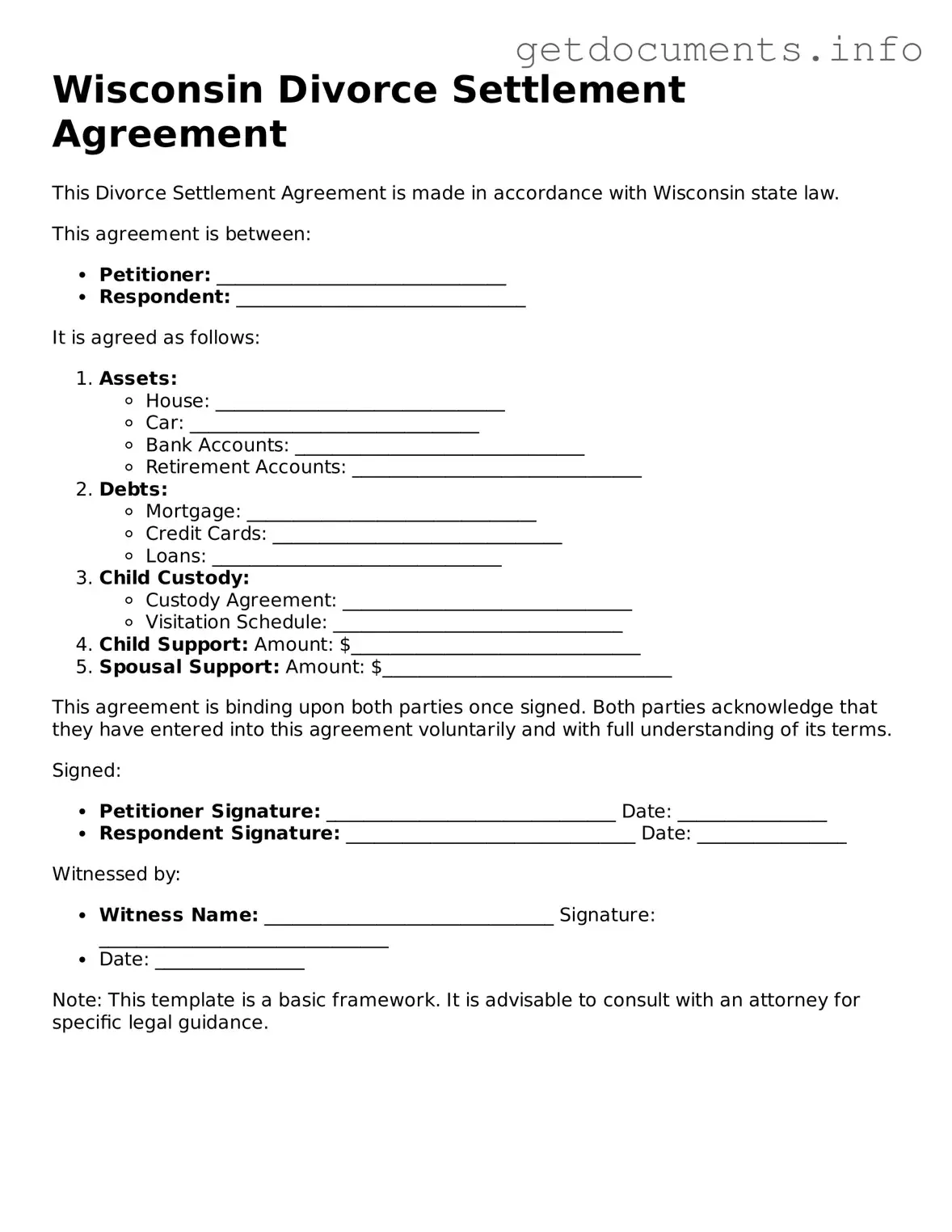Free Divorce Settlement Agreement Template for Wisconsin
The Wisconsin Divorce Settlement Agreement form is a legal document that outlines the terms and conditions agreed upon by both parties during a divorce. This form serves to clarify issues such as property division, child custody, and support obligations. Completing this form accurately is essential for ensuring that both parties' rights and responsibilities are clearly defined.
To proceed with your divorce settlement, fill out the form by clicking the button below.
Access Divorce Settlement Agreement Editor
